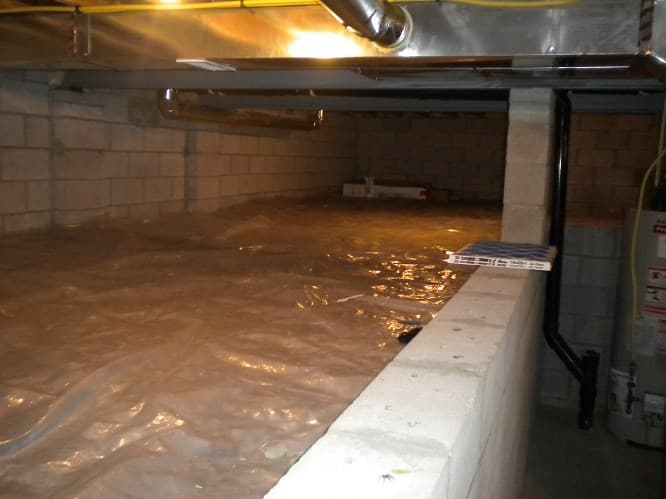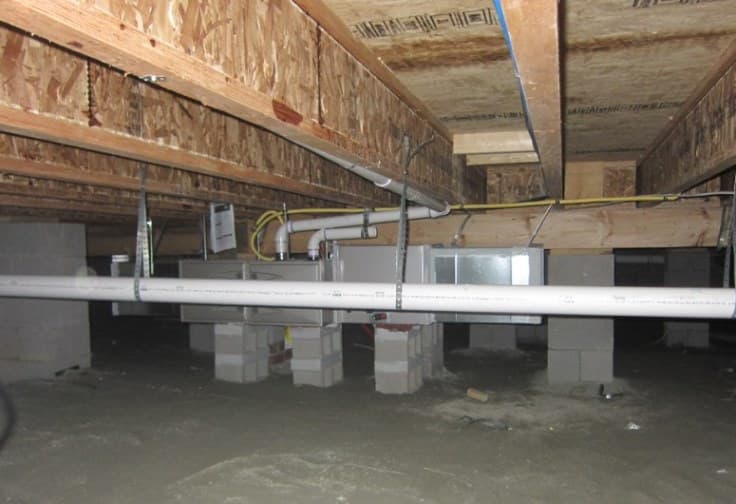Crawl spaces are typically areas beneath a building that are not tall enough for a person to stand up in. They are used for accessing utilities like plumbing, electrical wiring, and sometimes for ventilation purposes.
When it comes to the foundation of your home, the choice between an excavated and unexcavated crawl space can have a significant impact. This comprehensive guide aims to shed light on the differences between these two options, providing you with the knowledge needed to make an informed decision for your property.
Read on to discover the benefits and considerations associated with both excavated and unexcavated crawl spaces.
Excavated Crawl Space
An excavated crawl space refers to a type of foundation in a building where the space below the main floor is intentionally dug out or excavated to create a deeper area. This allows for easier access and potentially more usable space than a traditional shallow crawl space.
Here are some key aspects to consider:
Improved Accessibility
One of the primary advantages of an excavated crawl space is the enhanced accessibility it provides for maintenance and repairs. With additional headroom and a cleared-out area, professionals can navigate and carry out tasks with greater ease.
This translates to quicker, more efficient inspections, and ensures that any issues are promptly addressed.
Enhanced Ventilation and Air Circulation
Excavated crawl spaces tend to have superior ventilation compared to their unexcavated counterparts. This is due to the increased airflow that can occur in a cleared-out space.
Proper ventilation is essential in preventing moisture buildup, which can lead to mold growth and structural damage over time.
Optimal Insulation and Temperature Regulation
With more room to work with, it becomes feasible to install proper insulation in an excavated crawl space. This, in turn, leads to better temperature regulation within your home.
You’ll experience fewer temperature fluctuations, resulting in increased comfort for you and your family.
Moisture Control
Excavated crawl spaces often have better moisture control. With proper sealing and insulation, the risk of moisture-related issues, such as mold and mildew, is significantly reduced.
Structural Integrity
The careful excavation process ensures a more stable and level foundation. This can lead to fewer issues with settling or shifting over time, contributing to the long-term structural integrity of your home.
Read Also: 5 Mistakes to Avoid for First Time Home Renovation Projects
Unexcavated Crawl Space
An unexcavated crawl space refers to the space beneath a building where the natural ground level has not been altered or dug out. In an unexcavated crawl space, the area below the main floor is typically shallow, and it doesn’t provide enough vertical space for a person to stand up in.
Let’s examine some crucial factors relating to unexplored crawl spaces:
Cost-Efficiency and Reduced Construction Time
Opting for an unexcavated crawl space can be a more budget-friendly choice. The process involves minimal excavation, which translates to lower labor costs and a shorter construction timeline.
This can be particularly appealing for homeowners looking to save on their project expenses.
Natural Insulation
Unexcavated crawl spaces often have natural insulation provided by the surrounding soil. This can help regulate temperatures to some extent without the need for additional insulation materials.
While not as effective as installed insulation, it can still contribute to energy efficiency.
Preservation of Structural Integrity
Since an unexcavated crawl space involves minimal alteration to the natural terrain, it can help preserve the structural integrity of your property. This may be a crucial consideration for homeowners concerned about potential ground settling or erosion.
Limited Access
One drawback of unexcavated crawl spaces is the limited accessibility. This can make maintenance and repairs more challenging, potentially leading to higher labor costs for any work that needs to be done.
Here’s a table outlining the key differences between excavated and unexcavated crawl spaces:
| Aspect | Excavated Crawl Space | Unexcavated Crawl Space |
|---|---|---|
| Depth | Deeper, with enough space to stand | Shallow, not tall enough for standing |
| Usability | Potentially usable for storage or living | Not suitable for human occupation |
| Access | Easier access for maintenance and utilities | Access is limited due to low height |
| Purpose | May serve as additional functional space | Primarily for utility access and ventilation |
| Structural Integrity | Requires careful planning and expertise | Standard construction with natural ground level |
| Insulation | Easier to install proper insulation | May require special considerations for insulation |
| Moisture Control | Better control due to enhanced design | Requires specific measures for moisture prevention |
| Cost | Potentially higher due to excavation work | Typically lower cost for standard construction |
| Building Codes | May need to comply with specific regulations | Standard codes for crawl space construction |
Excavated vs Unexcavated Crawl Space: Which is Right for You?
The decision between an excavated and unexcavated crawl space ultimately depends on your specific needs, budget, and long-term plans for your property. Consider factors such as accessibility, moisture control, cost, and insulation needs before making a choice.
Frequently Asked Questions
How does moisture impact crawl spaces?
Excessive moisture in a crawl space can lead to mold, mildew, and structural damage. Proper insulation and moisture control are crucial for maintaining a healthy crawl space.
Is it possible to convert an unexcavated crawl space to an excavated one?
Yes, it is possible to excavate a crawl space after it has been initially constructed, although it can be a complex and costly process.
Can I use an unexcavated crawl space for storage?
While possible, it may be more challenging due to limited accessibility. An excavated crawl space provides more convenient storage options.
Are there any eco-friendly options for crawl spaces?
Yes, eco-friendly insulation materials and moisture control solutions are available for both excavated and unexcavated crawl spaces.
How often should I inspect my crawl space for issues?
Regular inspections, at least once a year, are recommended to catch and address any potential problems early.
Conclusion
Choosing between an excavated and unexcavated crawl space is a crucial decision for any homeowner. By weighing the advantages and disadvantages of each option, considering your specific needs, and consulting with a professional, you can make an informed choice that ensures the long-term health and stability of your home.

